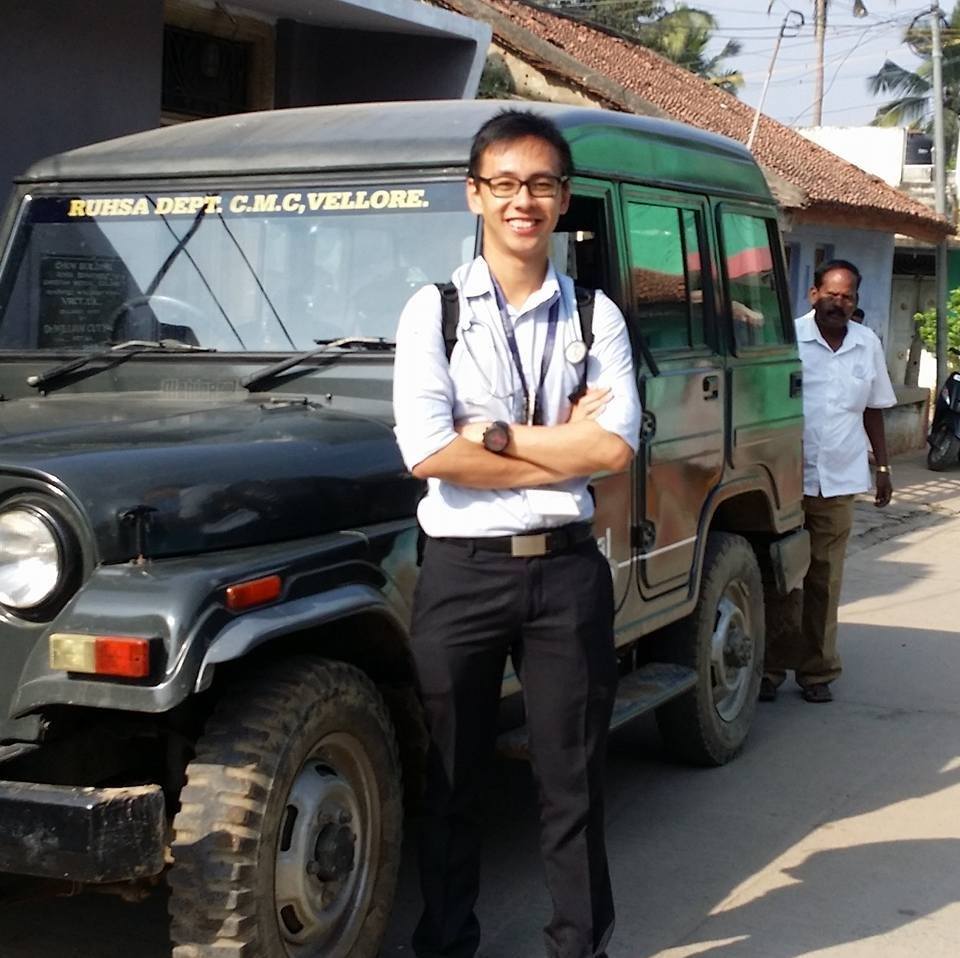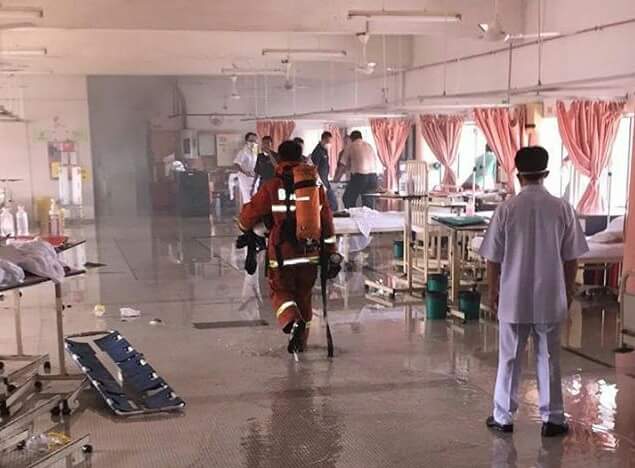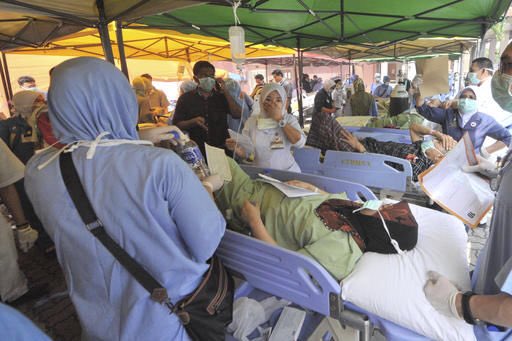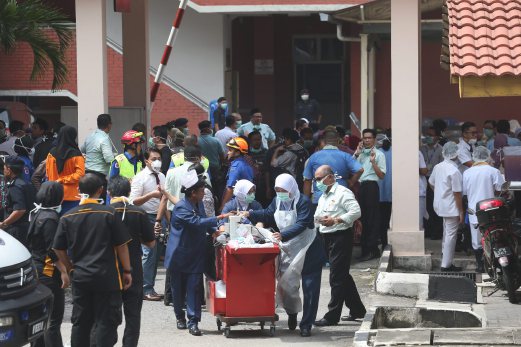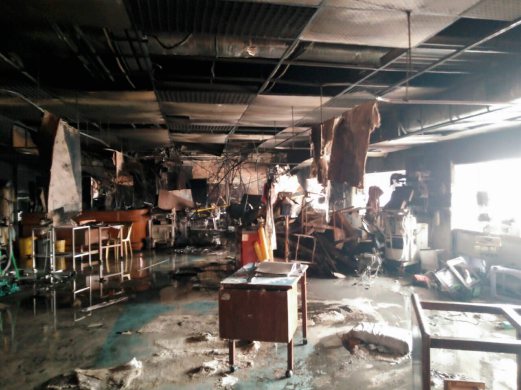Medical Student Shares Some Heartfelt Stories From The Deadly Hospital Fire In Johor
"I was reluctant to share as I know not how appropriate this is but the thoughts of the tragic experience at the hospital keep lingering in my head."
When the devastating fire that claimed six lives broke out at Hospital Sultanah Aminah (HSA) last week, medical student Raymond Lim was there to watch it all unfold before his very eyes
The 24-year-old medical student has been posted to HSA in Johor Bahru, Johor several times in the past three years to undergo clinical training. This time around, he was at the hospital for his anesthesiology posting.
The Johorean shared his thoughts and feelings about his experience with the tragic incident:
I was reluctant to share as I know not how appropriate this is but the thoughts of the tragic experience at the hospital keep lingering in my head.
I was in the changing room, preparing to go into the operation theatres (OT) when the blackout happened around 8:40am. Blackout is not uncommon in the public hospital, so I did not feel suspicious. As soon as we went into the OT we saw a commotion, with staff rushing off down the corridors, saying, "ICU on fire".
I did not hear it clearly then, there was no alarm or siren, not yet. Then, we saw people at the windows of the OT where we could see the ICU directly opposite us. I could see fire behind the windows with flames raging in the now-dark ICU. The fates of the patients were ominous.
I recalled that the anesthesiology consultant in charge sprang into action, giving orders to the staff in the OT to get the patients out of the operating rooms if they had not started their operations.
"At least one nurse to one patient. Those who can walk, walk; those who can’t, push them through the other exit," she shouted. I was amazed at how calm she was, at least that was how she portrayed herself then.
We evacuated together with the patients, and moved to the assembly point.
After watching the fire from the hospital entrance and the firefighters who took quite some time to get into action, my friends and I decided that there was nothing that we could do there.
We were better off finding patients who have been evacuated and see what we could do to help.
It was nothing short of chaotic. Makeshift tents were used in an attempt to shelter the patients behind the main block.
I imagined it probably had some resemblance to a refugee camp site and perhaps had some similarity to a war zone. Everyone was in action and people from other departments were there. The emergency department specialist tried to put things under control.
I tried not to interfere and slow down the relief work, so I offered help in the simplest manner, like fanning the patients and moving the patients evacuated while other medical staff do other work requiring their skills.
The air was filled with smoke and the heat was suffocating, everyone had surgical masks but they hardly protect the patients or us from the smoke, just like it was pretty much useless in the annual haze we have, but that was all that we have got. N95 masks were scarce.
It was then, when a Pembantu Perawatan Kesihatan (PPK) drenched in sweat approached the tent while I was fanning a patient. He looked exhausted, yet he came to the tent seeking to help in whichever way that he can.
I looked at him and tried to initiate small talk to break the tense atmosphere. I said, "It's hot isn't it?" He replied, with a regretful voice, "Yeah, it was, I tried to save, but the smoke was too bad, we could not save those patients."
What I meant was the weather, but I did not realise was that he was one of those brave souls who attempted to go in and save the patients trapped in the fire.
"We could only leave them with the firefighters and the forensic, there is nothing we could do."
I could sense a great deal of guilt in his eyes. I did not know what to say but nodded. He risked his life and is now exhausted, but yet still trying to see what else he could do.
After the first wave of evacuation was over I lingered around on the site to see what I could help.
It was then when two strangers approached me and asked for directions. They said that they have been called by the undertaker to come and see the body. They were confused why the hospital was not the one that contacted them first instead of some undertaker.
I did not know how but I told them I will try to help. They probably didn't know who else to approach and they were not provided with much instructions initially.
I asked them for the name and after checking with another doctor on site, I led them to where the other families were gathered. While we walked under the drizzle, I asked one of the men regarding the family member they were looking for. I asked who the other man was, and he told me the other man was the patient's father.
When he told me more regarding the patient, I was flabbergasted. His description about his sister fits the patient I had a brief encounter with just a few days ago in the operation theatre. She was not a patient of mine, but I happened to see the procedure done on her.
They kept asking me for answers about what happened to the patient but all I could say was, "I am not sure, I am only a student."
I was almost certain that she was one of those trapped in the fire and could not be saved, but I dare not say something that was not verified. I felt really bad for the family members.
"I should not have sent her here if I knew this could happen. She was still alive and 'well' earlier," the brother said in regret.
I did not know how to correctly respond to them. The patient came to be treated but she was probably burnt beyond recognition. I cannot comprehend the least how it must have been for a father to come and identify his daughter's body, which was by then probably unidentifiable.
I could only pass them over to the counsellors, and hope and pray that they somehow find comfort, with time.
In retrospect, I wonder if it was just mere coincidence - that brief encounter earlier and why out of all the people in the crowd, the two had asked me for directions.
I wonder why out of all the victims, the family member they were looking for was the patient I had a brief encounter with. Sometimes I felt as if God wanted me to remember some things forever, and not to let it simply pass by me.
I thank God for the people, the staff. In times like this, I witnessed some of the most amazing things people can do together if they actually put others before their own interest; I witnessed how people responded courageously to the call to lead others albeit the sea of chaos.
While those brave and courageous individuals were commendable, I still grief for the patients and for Malaysia. Will Malaysia, now, at the cost of the lives of six patients, and many more who died indirectly, now result in a better facility, better healthcare for the majority of Malaysians? We always do firefighting rather than prevention and planning ahead. Will that now stop on account of those who died, that they will not die in vain?
I grieved, but what I was feeling was in no way comparable to what the family members must have felt.
At the same time, I felt angry. The fire was not simply the result of an accident. Yes, no one intended it to happen. But it was a tragedy that I believe could have been prevented. We need to be intentional in prevention. The only problem with us is the failure to realise what are urgent matters until it is sometimes too late.
The six patients were not the only victims. There are many more patients who were stable before the tragedy but deteriorated during the evacuation. The morbidity and mortality were high for critical patients who were transported in the emergency. Six died directly, but many others suffered indirectly by the fire. Many more are being victimised by the system over the years, unmentioned and unheard.
St Augustine of Hippo said, "Hope has two beautiful daughters; their names are Anger and Courage. Anger at the way things are, and Courage to see that they do not remain as they are."
Will there be less spending on luxurious stuff, corruption and more budget for the real essential needs of the people?
The medical staff keep trying to save, but the system and the limited resources keep killing the patients, directly or indirectly. At downstream they try relentlessly to save those drowning but upstream they keep throwing people down into the river.
I did not remember her name back then, but now, I promise I will remember her forever. May the victims rest in peace and not die in vain.
Living in the city ain’t a piece of cake but it could also be exciting and adventurous. How are you coping? How are you making the best out of things? Do you have a story or experience to share?
SUBMIT YOUR STORY NOW, or work on it and send it soon. Share a personal experience, your story as an urban city-dweller in Malaysia, whether it’s yours or from someone you know, email [email protected] or FB message us.
We’ll get in touch with you for your story to be featured on SAYS!
Stay tuned for the next episode!
